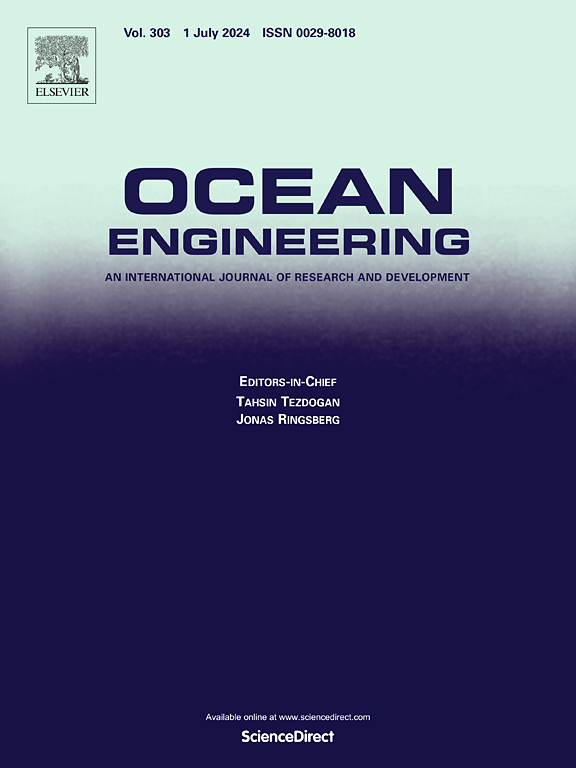Payload transfer and swing suppression via robust tracking control based on disturbance employment for ship to ship crane systems
IF 4.6
2区 工程技术
Q1 ENGINEERING, CIVIL
引用次数: 0
Abstract
With the gradual development of marine resources, it is increasingly important to study the use of cranes to realize ship-to-ship material replenishment. The ship-to-ship crane system consists of a crane mounted on a container ship and the target ship. Different from land-based cranes and traditional harbor cranes, ship-to-ship crane systems operate in two non-inertial frames, taking into account not only the disturbance of container ships on the cranes but also the inevitable effect of the target ship's motion on the target position of the cargo. To solve this problem, we established the dynamics model within a new non-inertial coordinate for ship-to-ship crane systems. Then, a continuous finite-time integral sliding mode observer (FISMO) is designed to estimate the unknown disturbance of the crane system, based on which a well-designed disturbance effect exploiter (DEE) is used to evaluate the beneficial and detrimental effects of the disturbance on the system. On this basis, a disturbance employment-based robust tracking controller, which is closely related to the energy-like function of the ship-to-ship crane system, based on disturbance estimation and DEE is proposed and discussed. Rigorous Lyapunov analysis ensures that the proposed controller enables the crane to transport the payload to the specified target position while guaranteeing the elimination of residual pendulum angles. Finally, the effectiveness and robustness of the designed controller are verified by comparing it with other existing controllers on a constructed experimental bench.
求助全文
约1分钟内获得全文
求助全文
来源期刊

Ocean Engineering
工程技术-工程:大洋
CiteScore
7.30
自引率
34.00%
发文量
2379
审稿时长
8.1 months
期刊介绍:
Ocean Engineering provides a medium for the publication of original research and development work in the field of ocean engineering. Ocean Engineering seeks papers in the following topics.
 求助内容:
求助内容: 应助结果提醒方式:
应助结果提醒方式:


